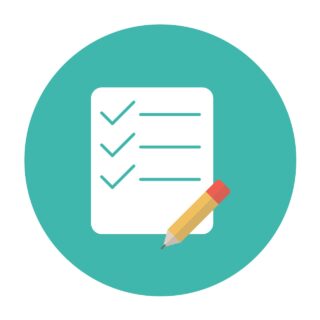Good sites are beautiful and functional, and a web designer helps make them so.
User experience (UX) design is the science and art of creating products (or Web sites) that provide users with the best possible experience.
Many of the visual design elements we discussed above affect how a site is perceived by visitors, but UX design also includes how exactly products evoke certain feelings in visitors.
UX designers think less about the technology behind the site and more about user research and the relevance of the experience created to users’ needs. This sometimes requires extensive user research and an understanding of perceptual psychology and interaction design principles. If you’re looking for more practice on UX, check out our fresh review of 7 courses on UX and interface design.
It’s important for web designers to learn the basics of UX design and the basics of user interface design (UX / UI):
Personas and Jobs (JTBD). Creating generalized images of the target audience and their needs, helps ensure that each design solution will hit the customers (be useful and emotionally engaging).
User research (UX/CX-research). Hotjar helps well in this, with it you can study heat maps, conduct user surveys – everything you need to promptly understand the reasons for behavior and motivation of site visitors.
User experience testing. Testing a site on real users can help identify points where visitors get stuck or confused, as well as identify points to pump up design value.
Information architecture and navigation (IA). It’s not complicated if you approach it in a comprehensive way. Information architecture is a story about the arrangement of information on a site: what pages should be on the site, what items should be on the menu and in what order, what blocks must be on the page for users to find the answer. It can only be done well by applying SEO analysis and an interview with a subject matter expert (the customer or an engaged expert who knows well what the site is about). Without analysis of search queries (actual user interests) and matching them with practical expertise, the site will be toyed with rather than approximated by reality.
Wireframing. Just as you wouldn’t build a house without a plan, you shouldn’t build a website without blueprints and a plan.
Wireframing helps you decide on the key elements and composition of your site pages in close-up, without sketching out the smallest details, at a level that’s sufficient to assess “what will be there and how it will work”. Tools such as Balsamiq help sketch out site layouts quickly, try it.
Web design honed for conversions
Companies and clients won’t shell out thousands of dollars for a new website just because it’s pretty. They need top-notch design to produce results for business – in fact, 48% of people indicated that website design is the No. 1 factor in determining business credibility.
Web designers simply need to create sites that motivate visitors to take the action they want, from signing up for a mailing list to buying a product to providing their contact information.
This means that Web designers need to know how to design so that conversions – the number of visitors who take targeted actions on the site, such as subscribing to a mailing list, buying a product, or entering contact information for potential customers – grow.
It’s a complex skill, from copywriting attractive text to reducing the number of decisions visitors need to make.
Here are some web design skills and tools you should learn:
Website design and layout tools. For designers who care about creating beautiful and functional sites for clients without getting bogged down in programming, WordPress plugins like Divi or Beaver Builder can be a great option. Even if your programming experience is limited, you can still create beautiful sites. There are also good website builders such as Tilda, Readymag and Webflow.
Graphic design tools. You can quickly create a functional and beautiful website with a command in Figma and Sketch. And Photoshop is now back in the position for which it was born: developing unique (any in terms of expressiveness) brand graphics without creative constraints.
Tools for prototyping and creating design concepts. Ideal for working through design concepts and clarifying the vision of the project with all team members in every detail. If Figma and Photoshop hold you back, InVision Studio helps you bring everything to life in the smallest detail and with soft behavior and micro-animations.










More Stories
What is a Business Analyst’s Role in App Development?
Web development and website programming
Digital Marketing